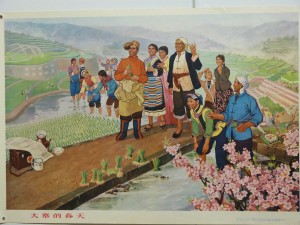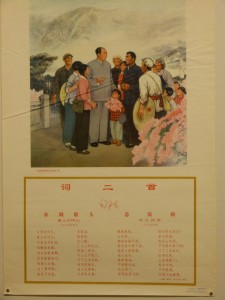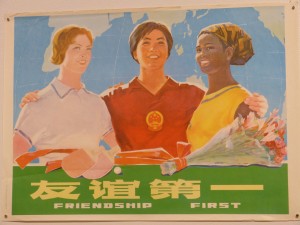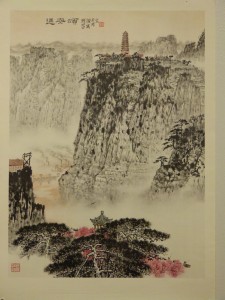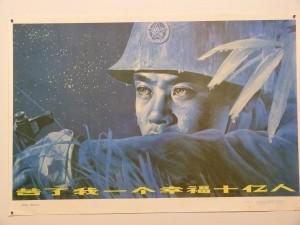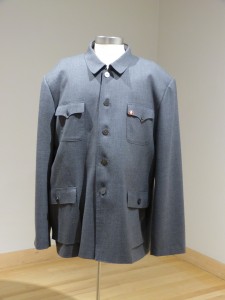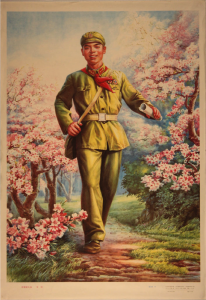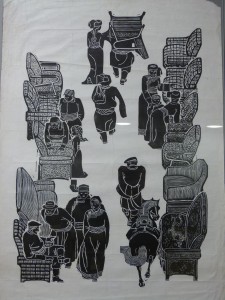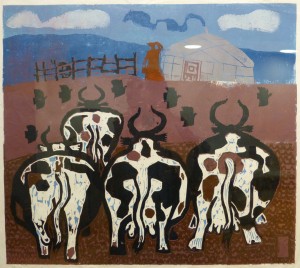[SlideDeck2 id=593]
不管黑猫白猫,捉到老鼠就是好猫.
It doesn’t matter whether a cat is black or white; it’s a good cat as long as it catches mice.
Deng Xiaoping(1904-1997) 邓小平 1986
Mao’s death in 1976 set off a wave of major changes in China. His successor, Deng Xiaoping, promoted economic reform. Deng’s famous quote, “It doesn’t matter if it’s a black cat or a white cat, as long as it catches mice,” uses metaphor to express his intent to achieve progress for China using any means necessary. Images of Lei Feng, Communist China’s model soldier, and posters of soldiers on guard reveal China’s enduring value of military strength. However, this era also saw the return of a more open, pre-Cultural Revolution atmosphere, allowing for creativity, self-expression and cultural commentary in the public sphere. Regionally, artists were developing their own styles, many influenced by newly discovered mid-20th century Western prints. Three prints from Inner Mongolia highlight how some artists combined traditional techniques with radically new subject matter, creating a synthesis of past and present.
